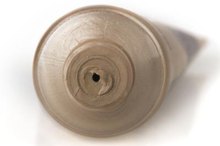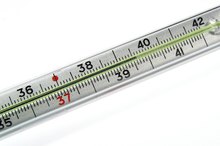What does fact checked mean?
At Healthfully, we strive to deliver objective content that is accurate and up-to-date. Our team periodically reviews articles in order to ensure content quality. The sources cited below consist of evidence from peer-reviewed journals, prominent medical organizations, academic associations, and government data.
- Essentials of Local Anesthetic Pharmacology
- Essentials of Local Anesthetic Pharmacology
- Life-Threatening Side Effects with the Use of Skin Products Containing Numbing Ingredients for Cosmetic Procedures
The information contained on this site is for informational purposes only, and should not be used as a substitute for the advice of a professional health care provider. Please check with the appropriate physician regarding health questions and concerns. Although we strive to deliver accurate and up-to-date information, no guarantee to that effect is made.
Lidocaine Vs. Benzocaine
Lidocaine and benzocaine are both local anesthetics, meaning they cause a specific area of the body to be insensitive to pain without causing loss of consciousness 2. As local anesthetics, they are commonly used in dental treatments, topical applications and even some surgical procedures. Although they are similar in their modes of action within the body, they are also different in their structure and potency 2.
If you are experiencing serious medical symptoms, seek emergency treatment immediately.
General Properties
Local anesthetics block the sodium (NA+) channels of the cell membranes. By blocking the ability of the sodium channels to open, or become active, the membrane cannot transmit any action potential, meaning it cannot send sensory messages to the neurons.
Structure Similarities
Lidocaine 5% Vs. Emla Cream
Learn More
The structure of local anesthetics is important to its function 2. Each anesthetic has a lipophilic aromatic ring that increases its lipid (fat) solubility. This increased solubility enhances its ability to reach the neurons, thereby increasing the anesthetic effects. In addition, both lidocaine and benzocaine have a terminal amine (an NH at the end) 2. This portion of the structure is important in the anesthetic's ability to transform between a water-soluble form and a lipid-soluble form 2. For the substance to be injected, as lidocaine often is, or to be in a suspension such as for ear drops like benzocaine often is, it needs to be water-soluble, meaning it can be in solution in water 2. However, once it enters the body, it must transform into a lipid-soluble form so that it can penetrate the neuron and induce the anesthetic effect.
Structure Differences
Benzocaine and lidocaine also differ in their structures 2. Lidocaine is an amide anesthetic because it has the amide chain (NH attached to a carbon with a double bond to oxygen) 2. Benzocaine, however, is an ester anesthetic, because it has a carbon-oxygen-carbon with a double bond to oxygen. Being an amide anesthetic, lidocaine is metabolized (or broken down) in the liver 2.
Uses
What Is Asenlix?
Learn More
Benzocaine is often used as a topical anesthetic. It is found in many over-the-counter formulations of sunburn products, oral ulcer ointments and ear drops. Lidocaine is more potent than benzocaine and for that reason it is more often found in prescription medication 2. Lidocaine may be found as a cream, gel, liquid or patch and is often used to relieve itching, burning, inflammation and pain on the skin 2. Lidocaine is also often used by dentists during procedures 2.
Cautions
Used in careful doses, the anesthetic effects of lidocaine and benzocaine are useful for a variety of applications; however, toxicity can occur, especially for lidocaine, because its effects penetrate deeper into the body 2. If too much is used, neuron signaling can be detrimentally affected, causing the central nervous system to become depressed resulting in convulsive seizures. The U.S. Food and Drug Administration (FDA) issued a warning in January 2009 against the use of local anesthetics such as lidocaine in cosmetic purposes 2. Two women who used a topical anesthetic in conjunction with laser hair removal experienced seizures that led to coma and death.
Related Articles
References
Writer Bio
Stephanie Chandler is a freelance writer whose master's degree in biomedical science and over 15 years experience in the scientific and pharmaceutical professions provide her with the knowledge to contribute to health topics. Chandler has been writing for corporations and small businesses since 1991. In addition to writing scientific papers and procedures, her articles are published on Overstock.com and other websites.







